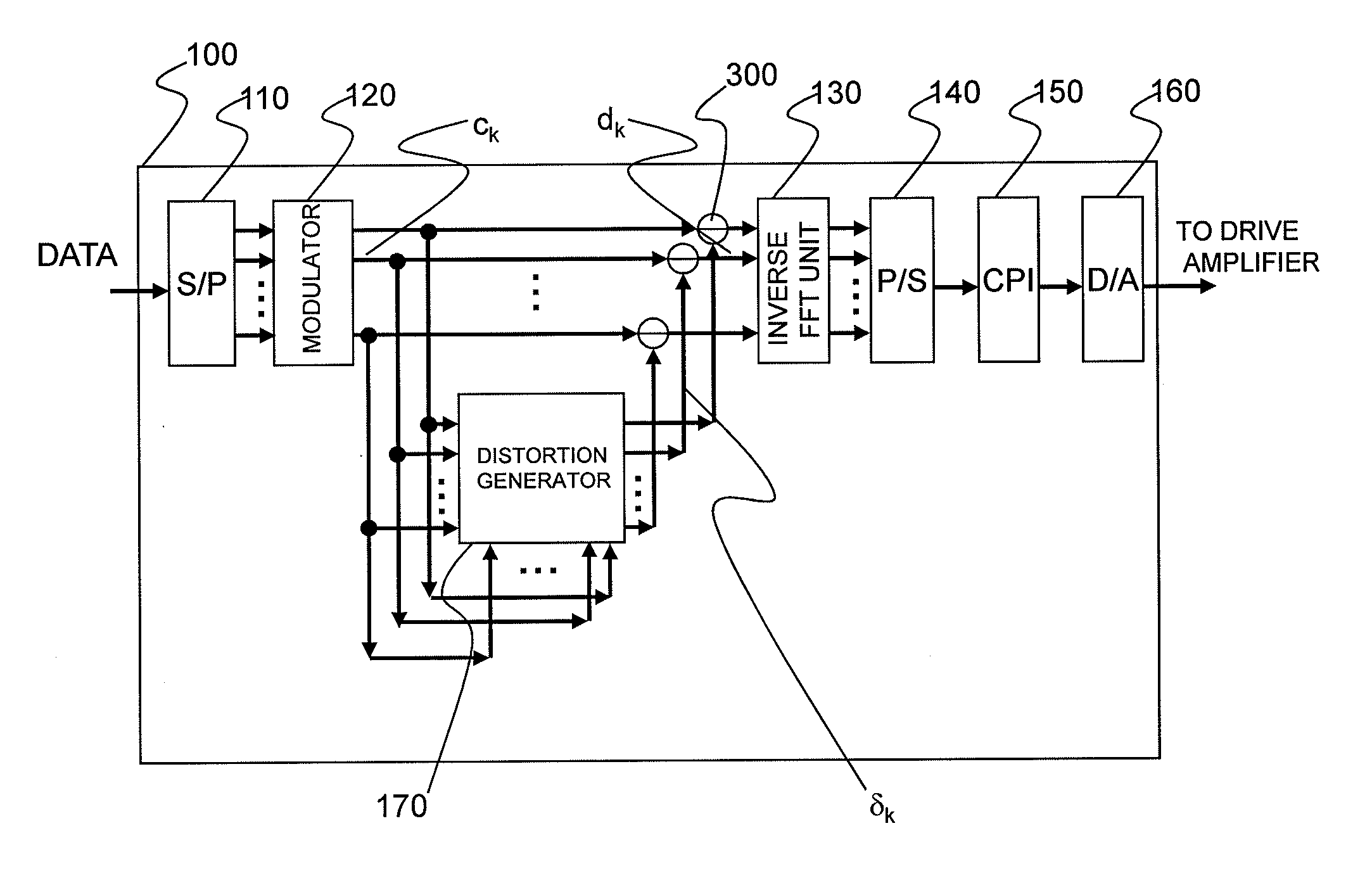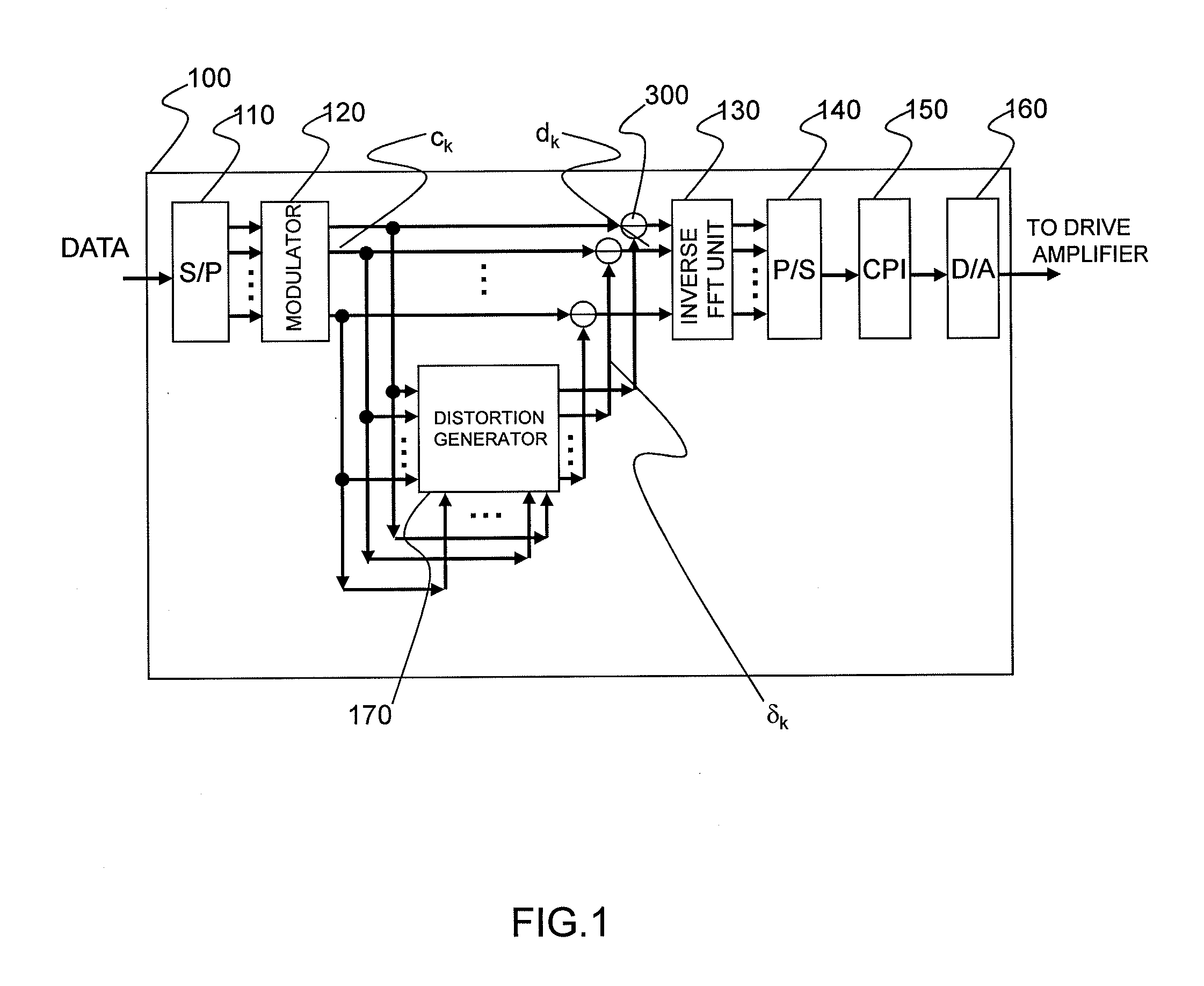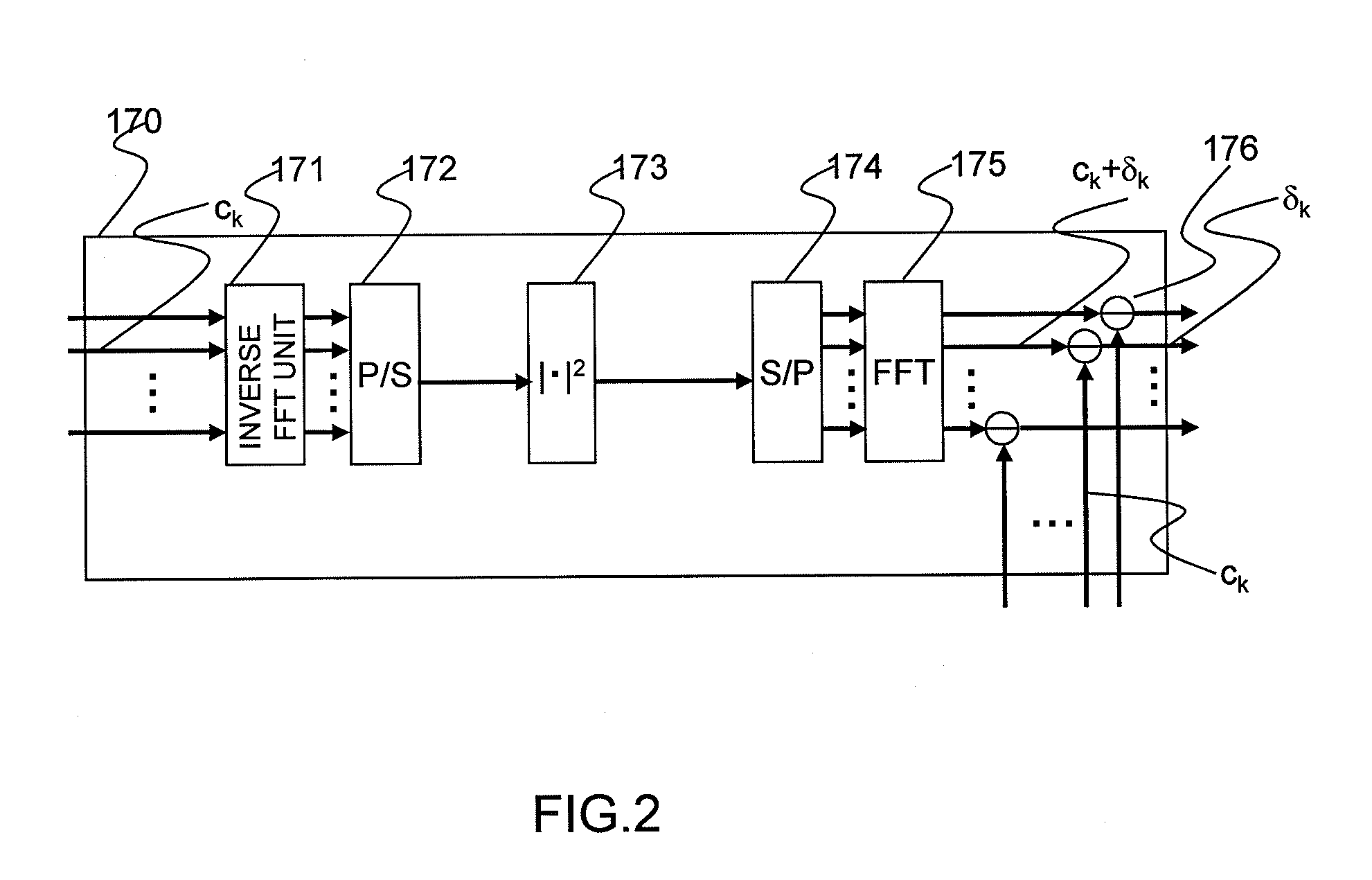Optical Transmitter and Optical OFDM Communication System
a communication system and optical fiber technology, applied in the field of optical transmitters and optical fiber communication systems, can solve the problems of inability to extract accurate distortion components, halve the transmission capacity of one optical fiber, etc., to reduce the distortion of the reception signal, increase the transmission capacity, and reduce the deterioration of the receiving sensitivity
- Summary
- Abstract
- Description
- Claims
- Application Information
AI Technical Summary
Benefits of technology
Problems solved by technology
Method used
Image
Examples
first embodiment
1. First Embodiment
[0100]A first embodiment will be described with reference to FIG. 1. In this example, for description, it is assumed that modulation of subcarriers is 4-QAM. However, this embodiment is not limited to this modulation, but is applicable to an arbitrary subcarrier modulation system. Also, it is assumed that the number of subcarriers is N (N is an integer).
[0101]FIG. 3 illustrates a configuration diagram of an optical OFDM communication system.
[0102]The optical OFDM communication system includes, for example, a transmitter (optical transmitter) 1, an optical fiber 5, and a receiver (optical receiver) 6. The transmitter 1 includes, for example, a transmission signal processor 100, a driver amplifier 2, a laser 3, and an optical modulator 4. The transmitter 1 may include an input terminal 9. The receiver 6 includes, for example, a photodiode 7, a preamplifier 8, and a reception signal processor 200. The receiver 6 may include an output terminal 10. The transmitter 1 an...
second embodiment
2. Second Embodiment
[0115]A second embodiment will be described with reference to FIG. 7. FIG. 7 illustrates a configuration diagram of the transmission signal processor 100 of the transmitter 1 according to the second embodiment. The same configurations as those in the first embodiment are denoted by identical reference symbols, and their description will be omitted. The overall configuration of the system is identical with those of the first embodiment.
[0116]The transmission signal processor 100 according to this embodiment further includes a distortion generator 170′ and subtractors 310. In this embodiment, the distortion generator 170 used in the first embodiment is used twice (distortion generators 170 and 170′ in FIG. 7). The distortion generators 170 and 170′ can have the same configuration. A residual distortion (corresponding to a term of |c2|2 / |c0|2 on a right side of the above Formula (10)) attributable to the inter-subcarrier interference, which cannot be removed by the ...
third embodiment
3. Third Embodiment
[0119]A third embodiment will be described with reference to FIGS. 13 and 17. The overall configuration of the system is identical with that of the first embodiment. The same configurations as those in the first embodiment are denoted by identical reference symbols, and their description will be omitted.
[0120]FIG. 13 illustrates a configuration diagram of a transmission signal processor according to the third embodiment.
[0121]The transmission signal processor 100 according to the third embodiment includes, for example, the serial-parallel converter (S / P) 110, the subcarrier modulator 120, the inverse FFT unit 130, the parallel-serial converter (P / S) 140, the cyclic prefix insertion unit (CPI) 150, the digital-analog converter (DA converter) 160, a predistortion unit 180, 2:1 switches (first switches) 181 and 1:2 switches (second switches) 182 corresponding to the subcarriers, and a switch controller 190.
[0122]FIG. 14 is a configuration diagram of the predistortion...
PUM
 Login to View More
Login to View More Abstract
Description
Claims
Application Information
 Login to View More
Login to View More - R&D
- Intellectual Property
- Life Sciences
- Materials
- Tech Scout
- Unparalleled Data Quality
- Higher Quality Content
- 60% Fewer Hallucinations
Browse by: Latest US Patents, China's latest patents, Technical Efficacy Thesaurus, Application Domain, Technology Topic, Popular Technical Reports.
© 2025 PatSnap. All rights reserved.Legal|Privacy policy|Modern Slavery Act Transparency Statement|Sitemap|About US| Contact US: help@patsnap.com



